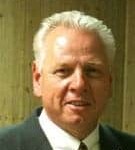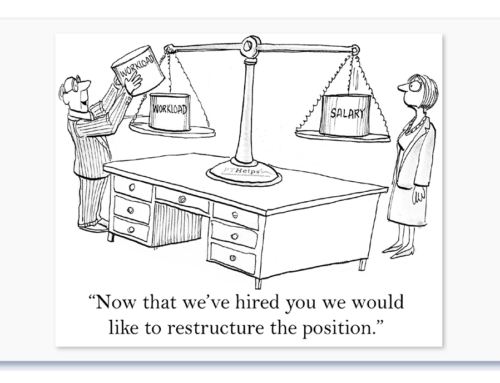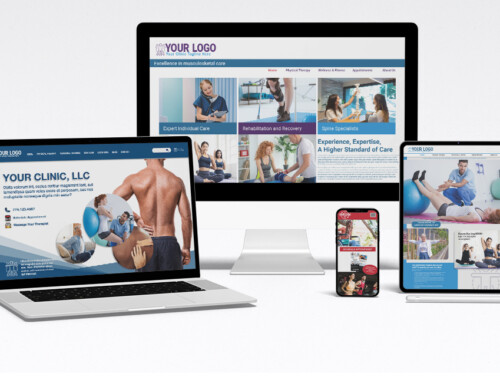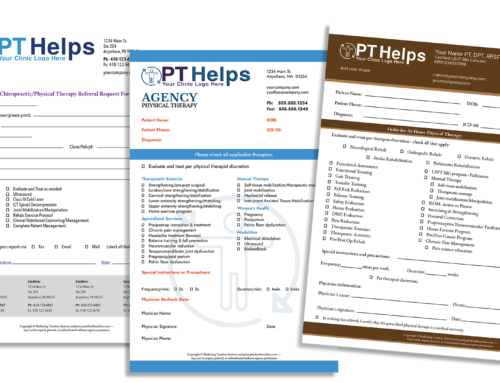It’s been six years since we launched PTreferralMachine.com, and we still have the same quote at the bottom of our homepage:
“Physical therapy services may offer the best value in healthcare, and this seems to be the best kept industry secret. Unless the physical therapy industry finds ways to communicate its value to the marketplace efficiently, it’s likely to remain that way. That would be a shame, because everybody loses – therapist, patient, and doctor alike.”
So for 6 years Trent and I have been writing about communication programs and strategies for physical therapists that we use with our clients to fight this battle, but today we get a day off as our old friend and industry insider Jeff Hathaway, PT, DPT shares his thoughts on this critical subject.
Jeff’s thoughts are of special significance in this new year of 2012 where changes with the rules for access to care and payor regulations loom larger than ever.
Thank you, Jeff, for adding to the conversation.
We hope you enjoy Jeff’s article, and thank you for reading.
________________________________________________________
Physical Therapy – Commodity or Value Driven Profession?
Part 1 of 2
By Jeffrey W. Hathaway, PT, DPT

A commodity is defined as a good or service for which there is demand, but which is supplied without qualitative differentiation across a market. How does this definition and concept apply to the profession of Physical Therapy?
The good news is that we certainly offer a service that is in demand, however the real question is whether the second half of that definition applies – “without qualitative differentiation”. Remember that the important thing is not necessarily how WE define ourselves but how the consumer (MD, Insurance Payer, Case Manager, Public, Media, etc.…) defines and perceives our profession.
Unfortunately, we are seen by insurance payers, many MD’s and the general public as a commodity, similar to “gold”, “corn” etc. One ounce of gold has the same exchangeable value, determined by supply and demand regardless of where you buy it.
In our consumer minds “PT is PT”, “gold is gold”, “corn is corn”; much like an MRI tech is an MRI tech – that is because the MRI machine is the important thing not so much the tech who performs it. Physical therapy is many times seen as “things” that techs (PT’s) do to patients.
How else do you explain common phrases like “they have had PT” or “PT has been tried”? Like it is “an event” or a “thing” that a person gets in the course of their care. Think about that phrase – I am sure we are all guilty of using it. We need to abolish that phrase from our language. Have you ever said to a patient – “have you had doctoring?” That sounds completely silly – because MDs are professionals and if you have seen one MD and are not better, you seek out a more highly trained or specialized MD. Medical Doctor is not a thing – it is a highly trained professional. In our profession, if you went to any Physical Therapist then it can be determined if “it” worked according to our consumers.
Many times accountants are more valued by consumers as individual professionals. You never hear from people: “did you have accounting for your taxes”, but you definitely hear “do you have a good accountant who can save me some money in my taxes?”
We need to create a huge paradigm shift in the minds of the consumers. A shift that can change consumer perception about our profession and ultimately lead to the full meaning of an “autonomous practice”.
First let’s examine how we may have gotten to this place.
Much of this appears to be self-inflicted. For years we focused on new machines or equipment that we were using in our clinics. We marketed the “things” that we use. The “new laser unit” or the “new electrical stimulator” or “kinesiotaping” become fads that we rely on them to appeal to our consumers.
Secondly we tend to market programs (back program, knee program, aquatic program, or the new pilates program etc.…), which are again “things”.
At the same time we seem to be fixated as a profession as to what is “skilled” activities (things) versus “non-skilled”. MD’s never have such discussions. PT’s for some reason want to breakdown our patient visits into things – falling right into the commodity trap. It is no wonder that consumers associate “things” when they think of PT. If most PT clinics have the same specialty equipment, a back program, and provide the same codes or skilled services – then which one you go to doesn’t matter in their mind; “an ounce of gold is an ounce of gold”.
Hence we are seen as a commodity. Instead our value should be related to the expertise of the physical therapist – their ability to assess and direct a treatment plan to reach the goals determined. And if one PT is unsuccessful then another more experienced and specialized PT may get better results.
An environment that does not perceive physical therapy as a commodity; consumers who value physical therapists as the first choice in the primary care of neuromusculoskeletal disorders would lead the profession to unimaginable high levels of value in the marketplace.
What to do about it?
Part 2 of 2
Physical Therapy – Commodity or Value Driven Profession?
(Part II)
In Part I, we discussed how physical therapy has become viewed and treated as a commodity. We defined a commodity as a good or service for which there is demand, but which is supplied without qualitative differentiation across a market. If we are seen as a commodity then we will be treated as a commodity by the marketplace. In short that means we will be seen as a uniform service and there will be constant forces to pay the least for the service given the supply and demand levels. A car is a commodity. Wouldn’t you shop around for the car dealer who can give you the best possible price for the same car? I bet that sometimes you bargain for the best price. Same thing happens when viewing PT as a commodity.
The results of being a commodity are painfully clear in todays PT marketplace – especially in NY.
How does one fight this commodity trap? It is simple but not easy. The key to getting out of the commodity trap for any business or profession is to move the business model from a demand fulfillment model to a value creation model. Most clinics today work in the demand fulfillment model. This model is the classic “find a need and fill it” approach. However, as the supply reaches the demand level the price becomes the primary differentiator and begins to drop to what the market will bear. In a third party payer system this downward pressure is more dramatic and is not driven down in the classic manner of competition price wars but rather of seeing how much can be squeezed by a third party.
In order to operate in a value creation model the business needs to create a level of value that creates the willingness of the market to pay a premium for the service. Once a business has created that value then the market will seek out that product or service and willingly pay more for it. There are two classic examples of companies that are in the business of selling a commodity who have successfully done this. First is Apple selling technology that has seen the price drop dramatically over the years and the second is Starbucks which sells the commodity of coffee. They both demand premium prices for a product that is in most circles a commodity. How did they do it? They applied the de-commoditization formula. That formula is a three-part formula:
- Understand your customer’s problem better than they do.
- Develop solutions to their problems that they do not see.
- Exceed expectations.
In the case of Apple they took portable music industry and created the i-pod. The i-pod was far and away beyond what any consumer could have possibly imagined to be possible. It solved the problems with portable music that we had (bulkiness, skipping of CD’s, limited content, etc…) but it also solved those at a level that the average customer could not imagine. Starbucks took coffee and built an environment and attachment that was far beyond what coffee drinkers could have imagined. Starbucks created a culture around coffee. In both cases they followed the formula and created such demand that they are not only very profitable but get consumers to pay considerably more for their commodity than their competitors. They now reside in the value creation model.
I believe that PT is at a crossroads. If we do not figure out how to apply the formula to our businesses then we will continue down this road we are headed on, which for private practice is unsustainable.
I also believe we can apply the formula to our practices. It will take creativity, changes in our practice models and the willingness to take risks. It is a completely different mindset. Most, if they were in charge of Apple, would reduce their price as it would undoubtedly increase volume and revenue. But Apple understands that it is in the value creation business not the demand fulfillment business. We must re-think our mindsets, our language, our image and what we really bring to the table. We need to start promoting the profession from the neck up, start becoming part of the solution for payers, start thinking outside the box for ideas that leverage our value in ways our customers (MD, payers, the public, etc…) don’t see yet. Then do it in a way that exceeds their expectations. We must let go of the victim mentality and be bold in how we claim our rightful place in the healthcare system. What say you?








Leave A Comment
You must be logged in to post a comment.